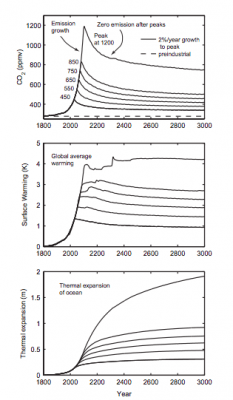In the article, “Climate change: How do we know?”, the author discusses just how prominent of the effects of global warming are today, specifically the effects that CO2 has played in getting us to where we are. The overall warming trend of the planet has been due to the result of human activity over the past years, specifically the increase in the levels of greenhouse gases being released into the environment.
Greenhouse gases are those that are released into the environment and trap the heat radiated by the sun, causing the warming effect that has led to the intense climate change we are experiencing. One of these very effective greenhouse gases is Carbon Dioxide. As shown in the chart attached to this article, CO2 levels, in units of parts per million, have reached new and astonishing levels where our planet is currently. Prior to 1950, the highest the CO2 levels ever reached was around 300 parts/million. However, today levels have reached numbers as high as 400 parts/million.
Everyday effects of global warming have been seen in the global temperature rise, of approximately 1.62 degrees Fahrenheit since the 19th century. In addition, there is the warming oceans, the shrinking ice sheets, the glacial retreat, the decreased snow cover, the rise in sea level, and many others.
Overall, this increase in CO2 levels, along with other greenhouse gases, proves to be resulting in a number of detrimental effects to our planet.


